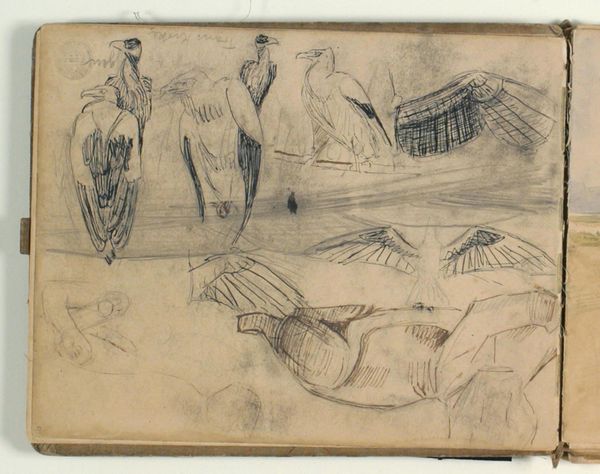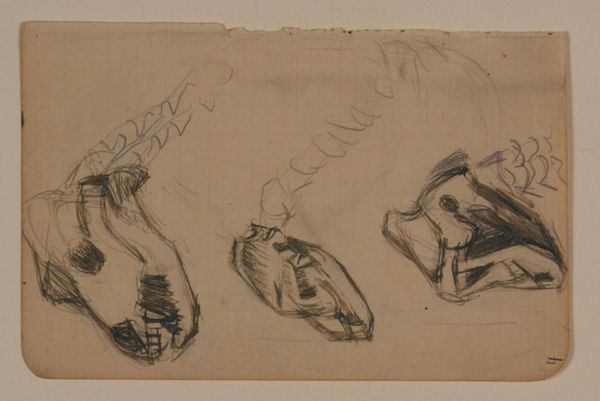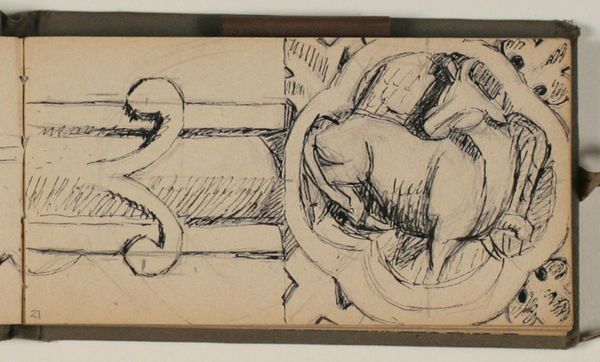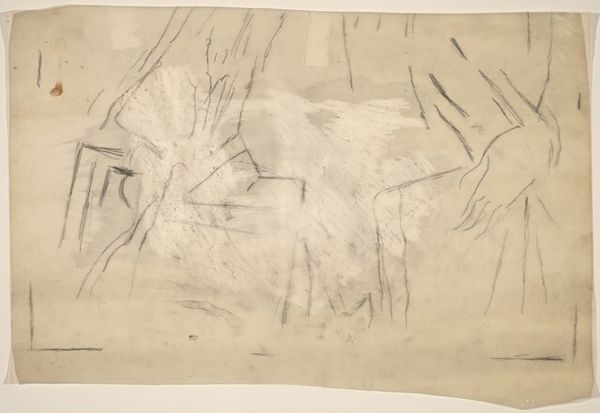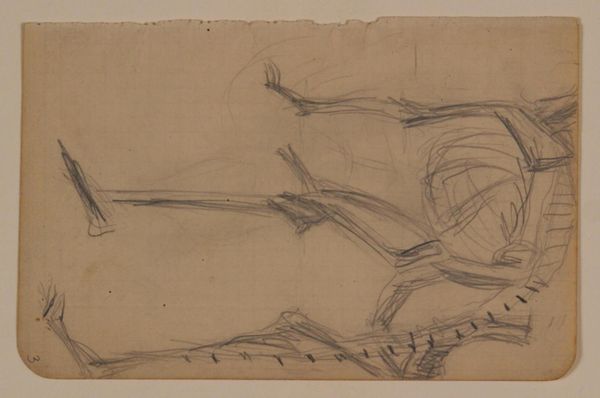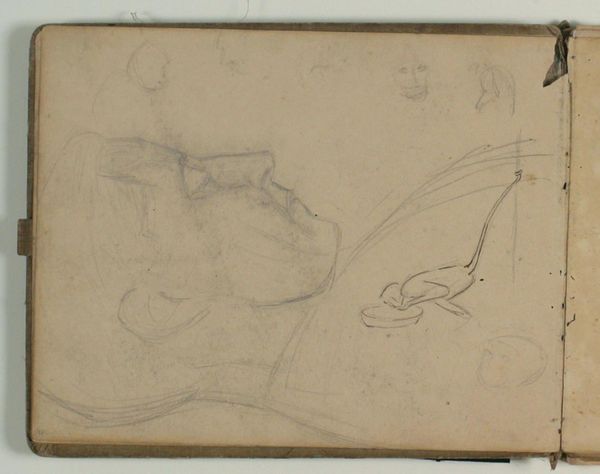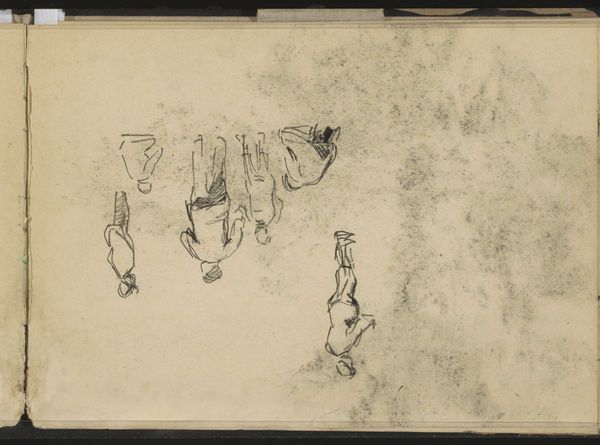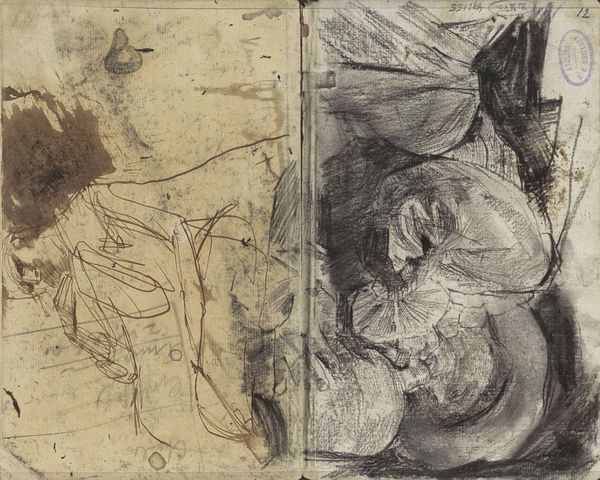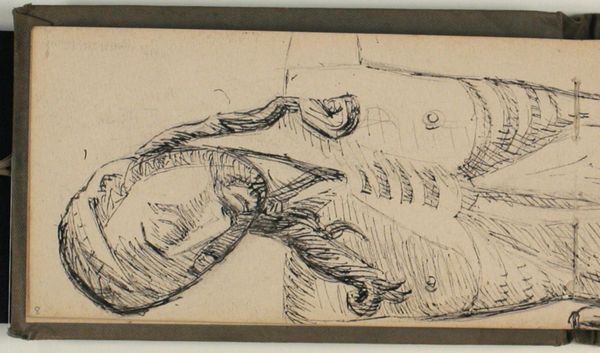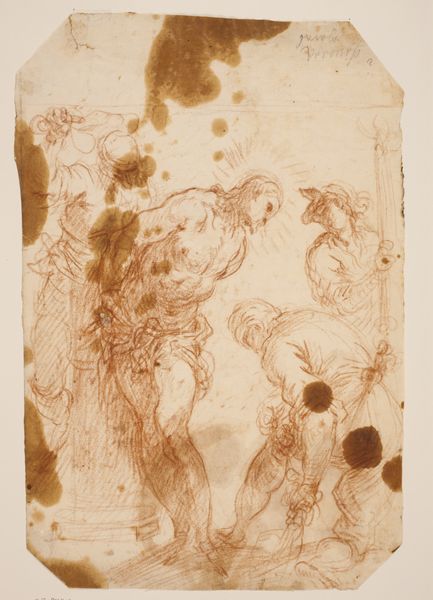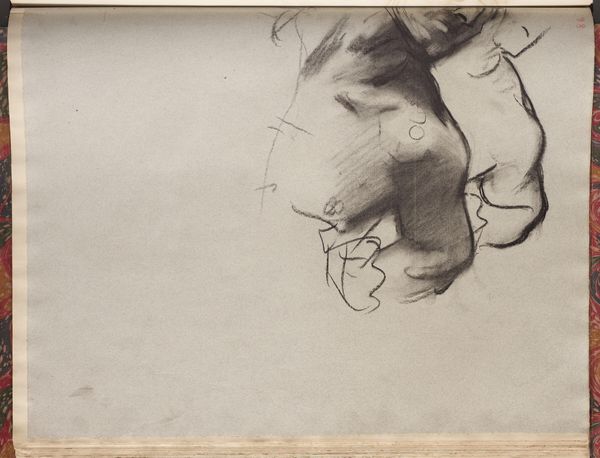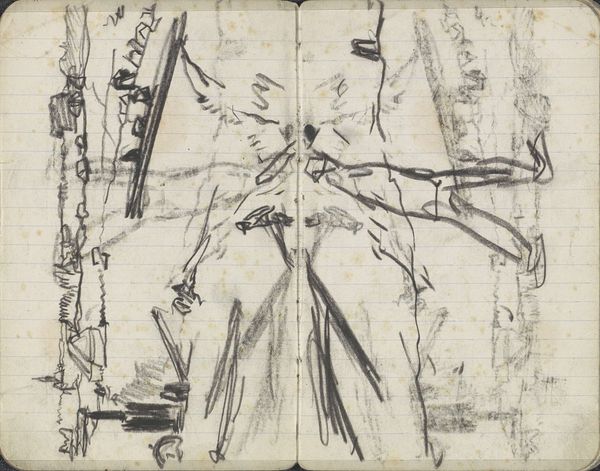
drawing, paper, pencil, frottage
#
drawing
#
landscape
#
paper
#
coloured pencil
#
pencil
#
frottage
Dimensions: 204 mm (height) x 260 mm (width) x 13 mm (depth) (monteringsmaal), 204 mm (height) x 260 mm (width) (billedmaal)
Curator: Here, we have Niels Larsen Stevns’ “Skitser af rovfugle. Artsbetegnelser,” made between 1900 and 1905. It is rendered using pencil, colored pencil, and frottage on paper. Editor: There's an urgent quality to these sketches, like the artist was compelled to quickly capture a fleeting presence. There is something primal here, it almost feels prehistoric. Curator: Well, the medium itself supports your interpretation; the layering of pencil, crayon, and frottage builds texture in a way that mirrors the physical layering of time and geological strata. Look at the different ways the artist used line—hatching, scribbling, contouring—it all speaks to the working process. Editor: I'm intrigued by how these birds of prey are portrayed not as majestic symbols, but rather deconstructed, almost vulnerable. This could be viewed as a commentary on human disruption of natural habitats. I see themes of power, vulnerability, and perhaps a broader commentary on ecological balance. Curator: Consider too the economic context. During the turn of the century, there was growing tension surrounding land use and conservation. Niels Larsen Stevns created numerous nature drawings throughout his career—I would also venture to say that his familiarity with working-class labor practices in agriculture deeply informs this sketchbook. Editor: It does prompt me to reflect on the social conditions during Stevns’ time, and perhaps on how urbanization and industrial growth were beginning to reshape the relationship between humans and the natural world. And even the simple choice of medium—pencil on paper—signals a conscious artistic choice regarding accessibility and the work. Curator: Exactly. Pencil, crayon and paper are easily sourced materials for art workers and artists, which can provide insights into its production value in fin-de-siecle art production. The fact that these are sketches is an honest acknowledgement that making art can be part of one's every day practices. Editor: So much can be inferred by exploring this compelling composition. Thanks for lending your insights. Curator: A real pleasure. And to consider such a seemingly simple sketchbook gives a great deal of insight.
Comments
No comments
Be the first to comment and join the conversation on the ultimate creative platform.
